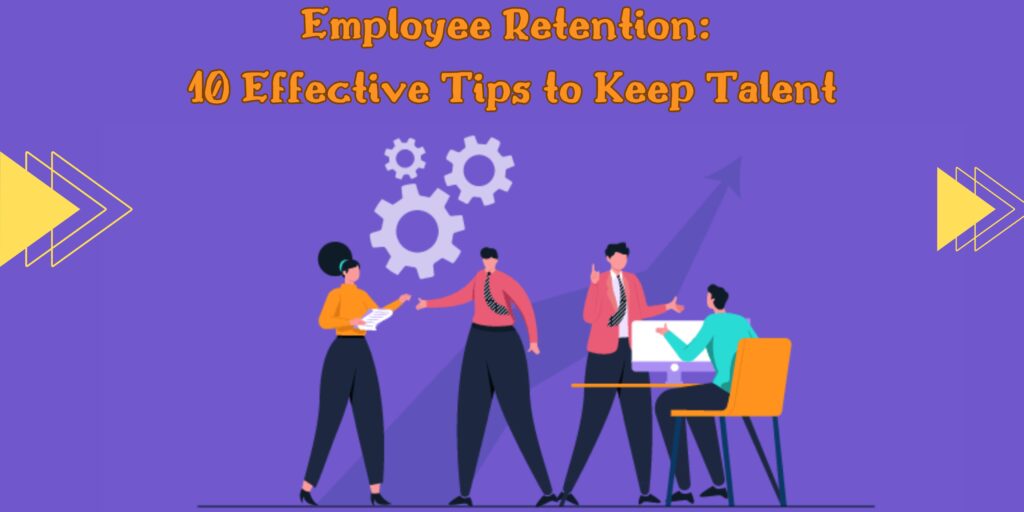
Understanding the Importance of Employee Retention
Why Retention Matters for Business Success
Employee retention plays a crucial role in the long-term success of a company. High retention rates often lead to more engaged, experienced, and productive employees. When a company is known for keeping its employees happy, it attracts better talent, strengthens its brand, and builds a reputation for being an employer of choice. By focusing on talent retention strategies, businesses can achieve more consistent results and create a stable workforce that contributes to growth.
The Cost of High Employee Turnover
High employee turnover comes with hidden costs, such as recruitment, training, and loss of knowledge. Every time an employee leaves, a company must spend time and resources to replace them. This can disrupt team dynamics and slow down productivity. By investing in employee retention tools and strategies, businesses can avoid these costs, keep their talent intact, and maintain high levels of operational efficiency.
Creating a Positive Work Environment
Building a Culture of Respect and Inclusivity
Creating a workplace culture where employees feel respected, valued, and included is essential for retaining employees. A strong culture can encourage loyalty, reduce workplace conflicts, and foster collaboration. A positive work environment where diversity and inclusivity are celebrated will naturally attract and retain top talent. Employees are more likely to stay when they feel part of an organization that appreciates their contributions.
Promoting Work-Life Balance
Maintaining a healthy work-life balance is one of the most effective ways to retain employees. Flexible work schedules, remote working options, and respecting personal time are just a few examples of how companies can promote work-life balance. Employees are more likely to remain loyal to a company that values their well-being and allows them to balance their work and home life.
Offering Competitive Compensation and Benefits
Aligning Salaries with Industry Standards
A crucial aspect of any talent retention strategy is offering competitive compensation packages. Regularly benchmarking salaries against industry standards ensures that employees are not tempted to leave for higher-paying positions elsewhere. Companies that pay fairly are more likely to retain their best employees. Additionally, offering bonuses, stock options, and performance-based incentives can further enhance employee satisfaction.
Benefits that Drive Retention: Healthcare, Retirement, and More
Beyond salary, comprehensive benefits packages are essential for employee retention. Health insurance, retirement plans, and wellness programs provide employees with security and demonstrate that the company is invested in their future. Providing benefits like paid time off, parental leave, and mental health resources can significantly improve employee engagement and retention.
Providing Opportunities for Growth and Development
Upskilling and Career Advancement Programs
Professional growth is one of the most compelling employee retention benefits. Offering employees opportunities to upskill, learn new competencies, and grow within the company shows that you value their personal and professional development. Implementing career advancement programs, leadership training, and certifications can help your team feel more motivated and committed to their roles.
Mentorship and Leadership Development
Mentorship programs are valuable employee retention tools that provide employees with guidance and support from experienced leaders. By creating mentorship and leadership development opportunities, companies can help employees envision a long-term career within the organization. Employees who see a clear path for advancement are more likely to stay and contribute to the company’s success.
Recognizing and Rewarding Employee Contributions
Implementing a Structured Recognition Program
Employees need to feel valued for their hard work, and recognition is key to retaining employees. Implementing a structured recognition program that celebrates individual and team achievements can help foster loyalty. Whether through regular performance reviews, awards, or informal praise, showing appreciation can significantly boost morale and improve retention.
Non-Monetary Rewards and Their Impact on Morale
While monetary rewards are important, non-monetary rewards such as public recognition, extra vacation days, or team-building events can be just as impactful. Offering creative ways to retain employees like flexible working arrangements or personalized development opportunities can help improve employee satisfaction and encourage long-term commitment.
Enhancing Communication and Feedback Channels
Encouraging Open Dialogue Between Employees and Management
Strong communication is at the heart of any effective employee retention strategy. Encouraging open dialogue between employees and management ensures that employees feel heard and valued. Regular check-ins, town halls, and open-door policies can promote transparency and trust, helping employees feel more connected to the organization.
Using Feedback to Address Employee Concerns
Acting on employee feedback is one of the best employee retention strategies. When employees see that their suggestions are taken seriously and lead to real change, they are more likely to feel valued and engaged. Using tools like surveys, one-on-one meetings, and exit interviews to gather feedback helps address concerns before they become reasons for employees to leave.
Fostering Employee Engagement and Team Building
Creating Opportunities for Collaboration and Teamwork
Employee engagement is closely tied to retaining employees. Creating opportunities for collaboration, such as cross-functional projects or team-building exercises, can help employees form strong bonds with their coworkers. A supportive team environment improves morale, increases job satisfaction, and reduces turnover.
Engagement Activities that Strengthen Team Bonds
Engagement activities like social events, volunteer programs, and wellness challenges are great ways to retain employees. These activities not only promote camaraderie but also foster a sense of belonging and commitment to the company’s mission. Employees who feel connected to their team are more likely to remain loyal to the organization.
Supporting Employee Well-Being and Mental Health
Mental Health Resources and Stress Management Initiatives
Supporting employee mental health is an essential part of any employee retention program. Offering mental health resources, such as counseling services, stress management workshops, and access to wellness programs, shows that the company cares about its employees’ well-being. Employees who feel supported are less likely to experience burnout and more likely to stay with the company.
Flexible Working Arrangements for Employee Wellness
Flexible working arrangements, such as remote work or flexible hours, can significantly improve talent retention. These arrangements allow employees to manage their work-life balance more effectively, reducing stress and increasing job satisfaction. By supporting employee wellness through flexibility, companies can improve retention and attract top talent.
Exit Interviews: Learning from Departing Employees
Gaining Insights to Improve Retention Strategies
Exit interviews are a valuable tool for improving employee retention strategies. By understanding why employees choose to leave, companies can address recurring issues and make necessary improvements. These insights can help shape future talent retention strategies and reduce turnover.
How to Apply Feedback from Exit Interviews
Applying feedback from exit interviews can lead to actionable changes in company culture, benefits, or management practices. When companies show they are willing to listen and improve, it sends a positive message to remaining employees and strengthens retention efforts.
Building a Strong Onboarding Program
Making a Lasting First Impression on New Employees
An effective onboarding program is key to retaining employees from day one. Providing new hires with a structured onboarding experience helps them integrate into the company more quickly and confidently. A well-organized onboarding program makes a lasting first impression and sets the tone for long-term retention.
The Role of Onboarding in Long-Term Retention
Onboarding is not just about the first few days or weeks on the job; it should be an ongoing process that continues throughout an employee’s journey with the company. Regular check-ins, ongoing training, and support during the first year can increase employee retention and build a strong foundation for future success.
Conclusion
Employee retention is essential for building a stable, productive, and successful organization. By implementing a comprehensive employee retention program that includes competitive compensation, professional growth opportunities, and a positive work environment, companies can retain their top talent. From providing mental health support to creating a culture of recognition, the best retention strategies focus on employee satisfaction, engagement, and well-being. Prioritizing these factors will help businesses keep their talent and thrive in a competitive marketplace.

